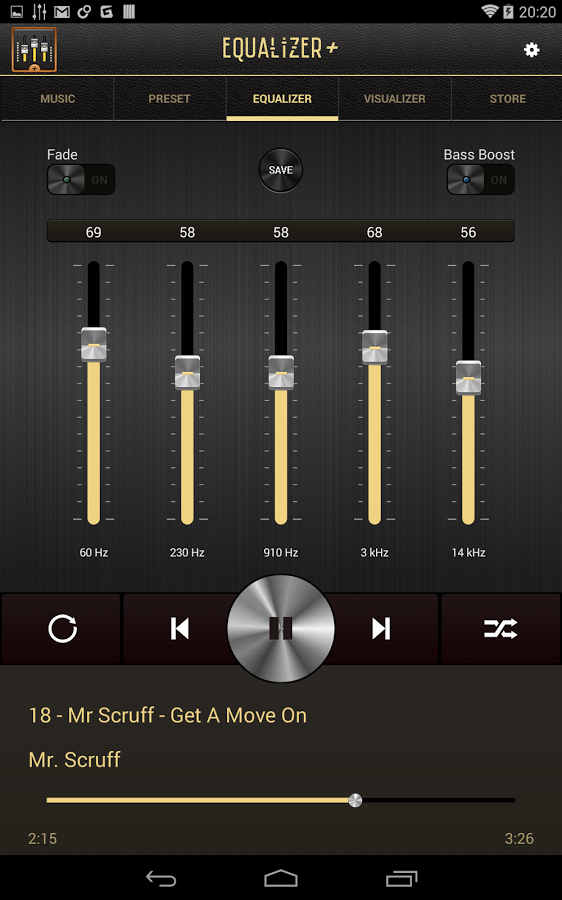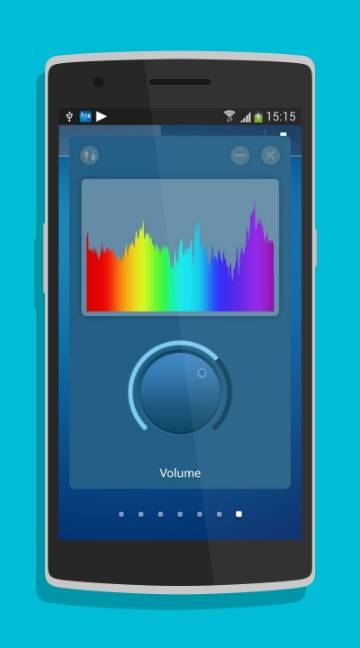
Thirdly, there are multiple algorithms to work with autogain. So anybody worrying about dynamics when changing gain is … well … off the mark imho. Secondly, most modern day music is compressed to a 2-3 dB dynamic range level.
#Equalize mp3 volume archive
When using PN a few things are worth noting.įirstly, try starting with lossless quality files (I personally turn all my WAVs into FLACs, do all the tagging and album art and such and then save them in my originals archive before going into the prep workflow to get things into my DJ collection.
#Equalize mp3 volume software
And it has beaten the autogain from free tools and DJ software in my opinion. So it’s all about sacrifices/choices…and careful constant eyes on the mixers channel/main leds.Īlso I have this setting on my behringer ddm4000 mixer called “ultramizer” which is kind of like a “read only” compressor which makes the music louder than it actually isīeen a Platinum Notes user for a long time. Now when I use original music files I have to pick the loudest section of the track(bass/mids/treble)in the waveform strip to set up dj Mixer L&R Channel/main audio levels as well as when cueing in mix in track and I have to be more careful/observant with the EQ/main led’s as it is more easier to slip into 1 red led from the orange led’s. Then using PN’s I chose mp3 format as final audio output and what I noticed (digital dj mixer wise)is that it was quite easy to not end up with even 1 red led UV light showing and all led’s sat in the orange(behringer DDM4000 mixer)however I then learn that compressed audio isn’t good if using various dj softwares as all have own compression algorithms and can cause beatgrids(waveforms)to end up off so lucky I chose to keep my original music files as PN’s only makes copies of original files and they end up in there own PN folder so I just needed to delete the PN’s folder/files as it isn’t “destructive” as it only makes its own copies doesn’t affect or delete the originals as I chose it NOT TO in app settings.
#Equalize mp3 volume how to
If you do it the first time open the export settings, set it where you want the files to be copied and if the original files should be kept, overwrite or deleted.Ī good explanation you can find in this youtube movie: Quick Tip: How to Record a Favorite in Adobe Audition - YouTubeĪlways make first a back-up of your files before starting (especially the first run/time) the batch process.Initially I had used PN’s as promoted(nagged)to do so whilst analysis of music files using MIK. select all the files from the files window of audition drag them into the batch window.

Open the popup window for batch processing, choose from the drop down your newly recorded session. Give your recording a name like -1db normalize process (Or what will be clear for you.) Now open several files into audition, say 10 files to start. In the popup change the value to -1 db, press enter and click apply.

Click Start recording favorite, when the recording is started go to effects → choose amplitude and compression → choose normalize. It is more simple than you think…, Just load a music file like a mp3 or wav or whatever you use to work with. If you want also to -1DB normalize you have to record it with the record option under Favorites menu.


So that is why I made my own option normalize to -1 db, because -0.1 is to less and -3 db I found that to much. Standard in Audition there are options like normalize to -0.1db and -3 db.


 0 kommentar(er)
0 kommentar(er)
